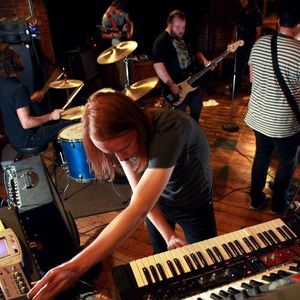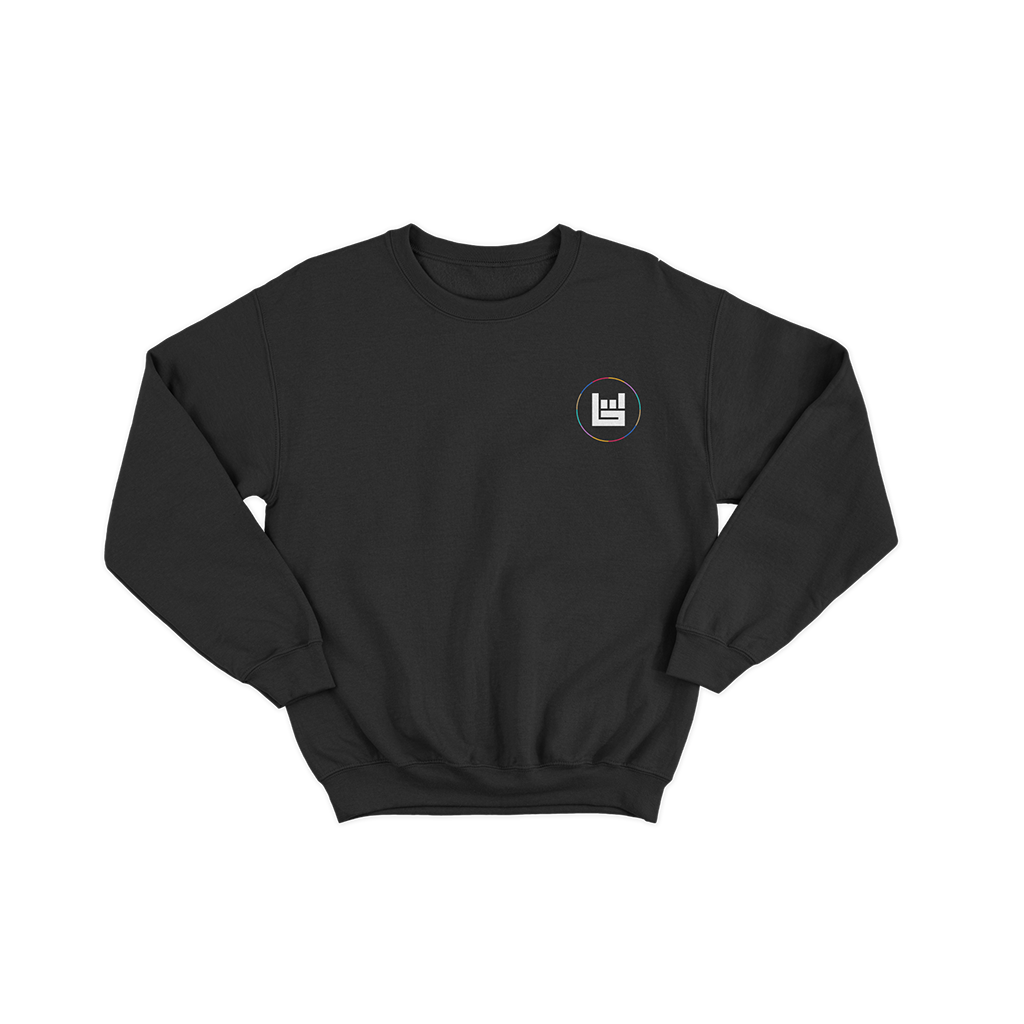
Tone Rodent
The Firebird
2706 Olive St
St Louis, MO 63103
Jul 30, 2018
7:00 PM UTC
I Was There
Leave a Review

About this concert
Oneida
Find a place to stay
Upcoming concerts from similar artists
Bandsintown Merch

Circle Hat
$25.0 USD

Live Collage Sweatshirt
$45.0 USD

Rainbow T-Shirt
$30.0 USD

Circle Beanie
$20.0 USD
Easily follow all your favorite artists by syncing your music
Sync Music

Share Event
Tone Rodent Biography
The year is 1999, and art student Adam Watkins is working through a program on a Sony PlayStation to build sound loops. In favor of the art of noise, Watkins recently dropped his paintbrush and acquired some machines from the school next to his own (the Kent Institute of Art and Design in England). One such device, used to teach Spanish, records sound and allows for tone and pitch control, with a foot pedal attached for rewinding. Watkins uses this with found sounds to paint music. He labels the curious resulting soundscapes "Tone Rodent." Fast-forward to the present: In 2013, Tone Rodent is cacophonous and loud. Watkins leads with a strong, esoteric voice while bassist Matty Coonfield lays the foundation with a lumbering sound. Keyboardist Mark Early brings sharp noise, cutting expertly through the band's musical arrangements. Jeff Robtoy's guitar lends an unhinged edge, channeling noisy feedback and dynamic range. Drummer Adam Dick keeps the beat like a live metronome, gluing each part to its whole. The band's giant sound is punctuated by Ashley Hohman, who backs up with added vocals and percussion. Watkins now fronts a six-piece band and funnels his noisy work through a strict rock filter. Still named Tone Rodent, the band's work can be heard on CD, cassette tape and vinyl. Its latest endeavor, A Bit Disconnected, will be released in April through Brazilian label the Blog That Celebrates Itself Records. While the music most closely resembles the shoegaze genre, the band's sound is varied with slices of ambiance and punk — two genres that rarely mix. The fourteen years between the group's inauspicious beginnings and its current triumphs were not without difficulties. When Watkins returned from England in 2000, he first approached Coonfield to join. The two had met years prior in college, finding common ground in their shared favorite bands. "The first time we met I was way into punk rock, and Adam was into Brit-pop," Coonfield says of their earliest encounters. "We met back up, and I thought, 'I think I'm into some of the same stuff you were talking about back then.'" The once-solo endeavor evolved over time into an organic, full-fledged performance, with new members rotating in and out of the band's ranks. Tone Rodent became a live exploration of the boundaries of sound, with Watkins sculpting texture through his guitar while Coonfield hammered out bass riffs. Tone Rodent started off wrinkled, flattening out over two or three years of performance and practice. Watkins and Coonfield worked gradually to build walls around their freeform music, and with added percussion, the group took on a Kraut-rock style invoking '70s German bands such as Neu! and Can. "Sometimes it would be one song and a long jam," says Coonfield of the band's early process. "A couple weeks later, maybe two songs, then noise. It happened pretty organically as we got better and used to playing real songs." Vocals were eventually added to the band's alien-sounding compositions, giving them a human voice. By 2003, Tone Rodent became a hybrid rock band, welcoming noise beside melody. Art openings and galleries became homesteads for the group while new members helped to hammer out Tone Rodent's sound. Live sets gradually tipped away from improvised music and toward strictly composed material. "Playing the art shows was fun, but it was like, if we get in front of an audience, we can't just do 30 minutes of noise," says Watkins. "That's a self-selecting audience — one that's few and far between. If we could find something more tangible, we could broaden that audience." The earliest available Tone Rodent recordings emerged in late 2003, featuring a full lineup including Watkins and Coonfield with Toby Mechem on drums, Peter Dycus on guitar and Keith Bueckendorf on synth and effects. This lineup worked through 2004 to self-release its first full-length. The self-titled collection of ten songs was recorded in St. Louis by Jason Hutto and mastered by audio engineer Carl Saff in Chicago. Through the next three years, Tone Rodent shared stages with the Black Angels, Valient Thorr and the Brian Jonestown Massacre, among many others, but the band's momentum slowed by 2007 when each member's focus moved in a different direction. Players came and went, practice was scarce, and progress slowed. Watkins and Coonfield pooled local artists for sporadic shows, eventually leading to a retooled lineup. When asked to perform at the Riverfront Times' Music Showcase in 2010, Tone Rodent accepted, but not without condition. At the time the band was without a drummer, so Watkins dropped recordings on Eric Hall, local purveyor of sound art. The result was a Tone Rodent show that actually lacked the presence of the band itself. Eric Hall altered chunks of the group's recordings in real time to mold a new piece of noise. "Eric went and performed as Tone Rodent. It was really great. Just me and Mark [Early, keyboardist] standing there watching Eric Hall play us," says Watkins. Tone Rodent continued writing throughout these lineup changes. Guitarist Peter Dycus left, and Jeff Robtoy joined. Mark Early remained on keys while Liz Wolfson backed with percussion. Watkins and company were diligent and produced a heft of sound, all the while still lacking a solid drummer. "We basically had all these songs. We thought we should do something, and that's when Adam talked to Martin Atkins," Coonfield says. Atkins is an English drummer well known for his work with Public Image Ltd, Ministry, Nine Inch Nails and a slew of others. "I had worked on a book that he did, and part of the payment was that he would play for Tone Rodent. I called him and said, 'We got these tunes. We'll record our bits, you record your bit.' And he said, 'No problem,'" Watkins says, explaining the band's connection to the legendary session musician. The members of the group recorded their individual parts sans drums and sent the material to Atkins to complete percussion. Tone Rodent used those same sessions for a collaboration with Rosco (Sterling Roswell), who is known for his stint in the English alt-rock band Spacemen 3. The resulting two releases shared pieces: "We had this batch of the same tunes where Martin did more traditional drumming and then Rosco did more experimental mixing and sounds," Watkins says. In 2011, Tone Rodent released two EPs, one titled Tone Rodent Featuring Martin Atkins, the other, Tone Rodent Featuring Sterling Roswell. The group quickly followed with its first cassette tape: a split with compatriots Bug Chaser. Drum auditions finally came to a close with Adam Dick, of the Dock Ellis Band, heeding the call. With its first solid lineup in years, Tone Rodent blazed through 2012 with a cut on the Tower Groove Records double LP compilation. The group capped the year with a split EP featuring Rosco, produced by Problem Solved Industries. Now Tone Rodent looks toward April, when its four-song CD A Bit Disconnected drops in Brazil. May will bring a new record as well; a split with local psych-rockers Kisser is set for release through Tower Groove Records as part of the 2013 Singles Club series. With the lineup problems in the past and tangible, recorded success now a strong part of the band's existence, Watkins and Coonfield still muse on a new full-length. "We don't care if we have to release this ourselves," Coonfield snarkily remarks. "We're ready for a second full-length. It's going to happen." -Joseph Hess Band from Saint Louis, MO
Read MorePsych And Drone
Space
Follow artist
